By Peter M. DeLorenzo
Detroit. Beginning in the late 50s and running through the mid-70s, sports car racing - particularly here in the U.S. - was captivated and dominated by V8-powered machines that barked their intent at race tracks all over the country. Sure, back in those days, SCCA (Sports Car Club of America) events were heavily populated by small-bore sports cars like Austin-Healeys, Triumphs, MGs, Minis, 356 Porsches and many other brands. And there was no question that they provided the backbone of SCCA racing back then. But starting in the late 50s with race-prepared Corvettes, and then fueled by the emergence of the Shelby American Cobra, and on to the USRRC, Trans-Am and Can-Am days, the real action was with the big-bore machines.
I vividly remember seeing the crowds gravitate to the fences when those V8s fired-up on the false grid. They couldn't really help it, because the sound was guttural, menacing and mesmerizing all at once. Standing among those cars on false grids all over the Midwest with our "A" Production Corvettes - Waterford Hills, Grattan, Mid-Ohio, Nelson Ledges, Milwaukee, Blackhawk Farms and, of course, Road America - was an in-period treat that I couldn't get enough of and will never forget. And besides the spectacular noise coming from those machines, the sheer speed was awesome to behold as they devoured every race track they visited.
And the legendary names that wheeled these machines were a mix of Hall of Famers and hard-scrabble drivers who wouldn't settle for anything less than the fastest, baddest V8s available. The legends were present and accounted for: Ken Miles, Dan Gurney, Roger Penske, Mario Andretti, Jim Hall, Bruce McLaren, Denny Hulme, Jackie Stewart, Peter Revson, John Surtees, Parnelli Jones, George Follmer, Mark Donohue, Swede Savage, Sam Posey, Milt Minter, Ed Leslie, Dr. Dick Thompson ("The Flying Dentist"), Allen Grant, Jerry Grant, et al. And, of course, my brother Tony and his teammate Jerry Thompson. This list of drivers - which I have affectionately dubbed "The Muscle Boys" - were just the tip of the iceberg. There were countless others who wheeled and manhandled their brutal machines at tracks all across the country. They were visceral, no-compromise machines that captivated the hearts and minds of racing enthusiasts, and if you've ever been to a vintage racing event, the same is true today, if not more so. I hope you enjoy the following images and recollections as much as I do.
And that's the High-Octane Truth for this week.
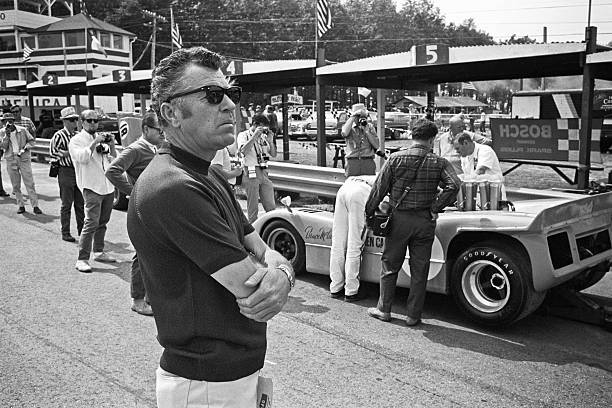
(Dave Friedman/Getty Images)
Elkhart Lake, Wisconsin, August 31, 1968. Carroll Shelby in the pit lane at Road America during practice for the Can-Am, with Bruce McLaren's No. 4 Gulf McLaren M8A Chevrolet in the background. Shelby entered the No. 52 McLaren M6B 427 Ford for Peter Revson, who qualified 7th and finished 4th. Denny Hulme (No. 5 Gulf McLaren M8A Chevrolet) won the race, which was run on Sunday, September 1st. Bruce was second and Mark Donohue (No. 6 Penske Racing Sunoco McLaren M6A Chevrolet) finished third.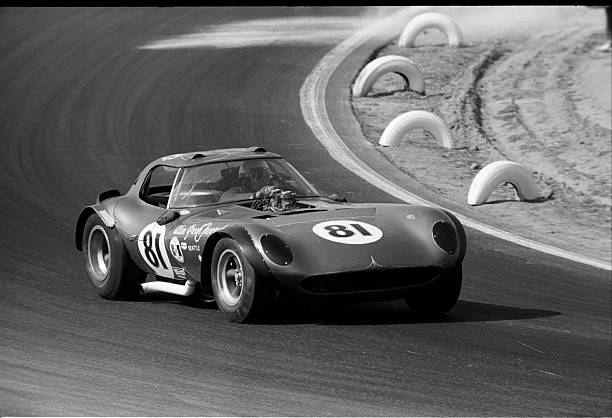 (Dave Friedman/Getty Images)
(Dave Friedman/Getty Images)
Riverside International Raceway, October 11, 1964. Allen Grant (No. 81 Alan Green Chevrolet Cheetah GT Chevrolet) during the L.A. Times Grand Prix for Sports Cars. The Bill Thomas Chevrolet-powered Cheetah was an inspired concept aimed at the Shelby American Cobra. Its lightweight was one of its featured characteristics, but so was its extremely short wheelbase, which made it a handful to drive. The timing of the Cheetah was unfortunate, as the mid-engine revolution swept road racing just as the machine made its competitive debut, so its impact was short-lived due to the fact that development pretty much stopped after it was introduced. I saw Ralph Salyer drive his Cheetah roadster at an SCCA National race on an airfield in Grayling, Michigan, in 1964. My brother Tony and I were there with our "A" Sedan Corvair, but I will always remember seeing - and hearing - Salyer pound around in his dark blue Cheetah roadster. Ironically enough, there is a Cheetah roadster active in vintage racing in the Midwest driven by a gentleman named Brian Garcia, from Chicago. Garcia's dark blue Cheetah roadster benefits from serious development, and Brian drives it exceptionally well. I'm sure it is by far the fastest Cheetah ever built, and if you ever get the opportunity to see Brian racing it, you will relish the memory.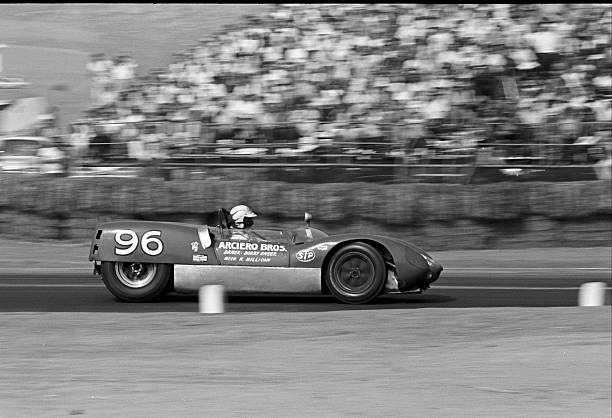 (Dave Friedman/Getty Images)
(Dave Friedman/Getty Images)
Riverside International Raceway, October 11, 1964. Bobby Unser in the No. 96 Arciero Bros. Racing Lotus 19 Monte Carlo Chevrolet during the L.A. Times Grand Prix for Sports Cars. Bobby finished sixth, which was three laps behind winner Parnelli Jones (No. 94 Shelby American Cooper King Cobra Ford). Roger Penske (No. 6 Chaparral 2A Chevrolet) was second and Jim Clark (No. 15 Team Lotus 30 Ford) finished third.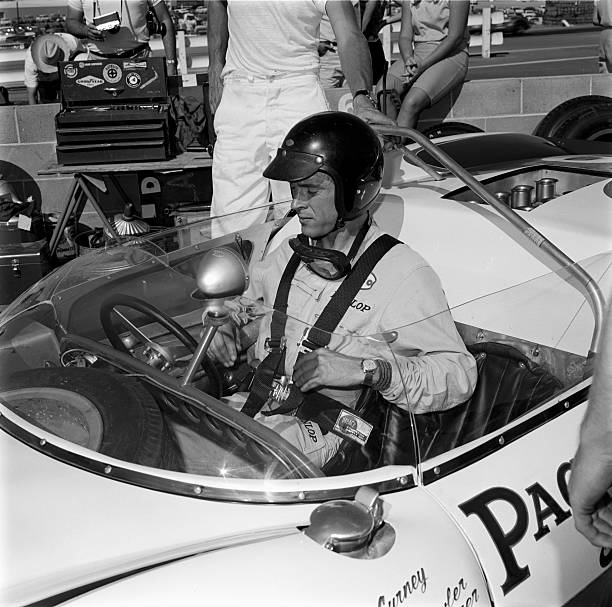 (Dave Friedman/Getty Images)
(Dave Friedman/Getty Images)
Riverside International Raceway, October 11, 1964. Dan Gurney sits in his No. 19 Pacestter Homes Lotus 19 B Ford before the start of the L.A. Times Grand Prix for Sports Cars. Dan qualified on the pole with a 1:29.300 but ended up starting dead last. With Dan moved to the back, the first three grid positions were filled by Bruce McLaren (No. 2 McLaren Elva Mark I Oldsmobile), Walt Hansgen (No. 26 John Mecom Racing Scarab MkIV Chevrolet) and Jim Clark (No. 15 Team Lotus 30 Ford). Gurney didn't finish the race due to suspension issues.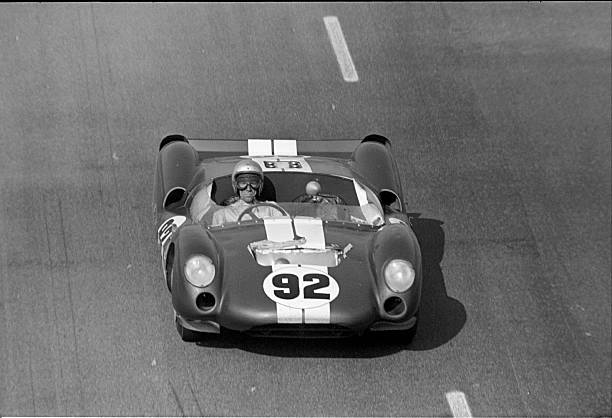 (Dave Friedman/Getty Images)
(Dave Friedman/Getty Images)
Riverside International Raceway, October 11, 1964. Richie Ginther in the No. 92 Shelby American Cooper King Cobra Ford during the L.A. Times Grand Prix for Sports Cars. Ginther qualified seventh and finished seventh in the 200-mile event.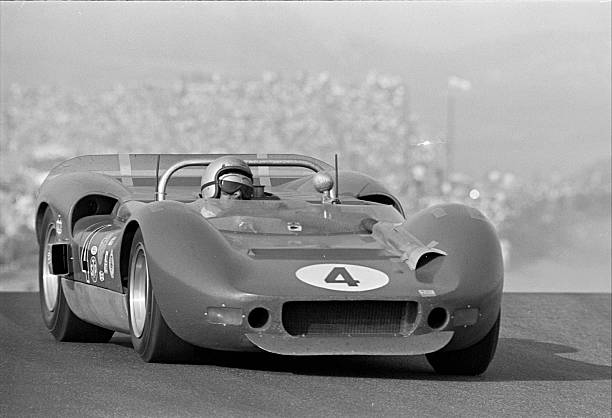 (Dave Friedman/Getty Images)
(Dave Friedman/Getty Images)
Riverside International Raceway, October 31, 1965. Bruce McLaren (No. 4 McLaren Elva Mark II Olsmobile) finished third in the L.A. Times Grand Prix for Sports Cars behind Hap Sharp (No. 65 Chaparral 2A Chevrolet) and Jim Clark (No. 1 Team Lotus 40 Ford).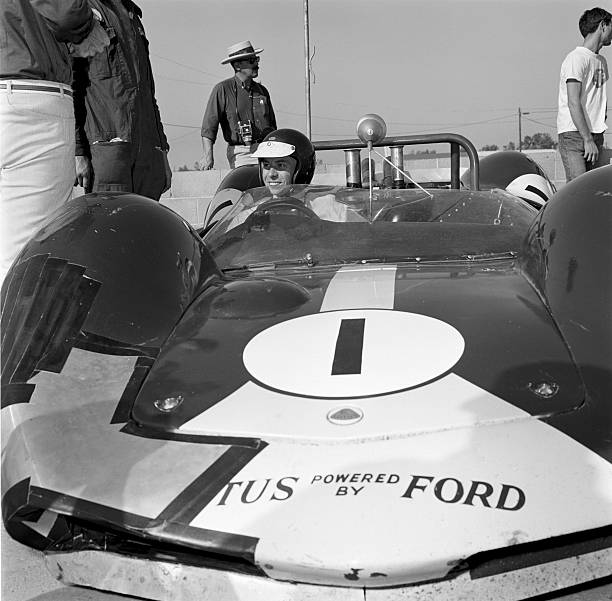 (Dave Friedman/Getty Images)
(Dave Friedman/Getty Images)
Riverside International Raceway, October 30, 1965. Jim Clark (No. 1 Team Lotus 40 Ford) - complete with "altered" bodywork after a shunt - during practice for the L.A. Times Grand Prix for Sports Cars.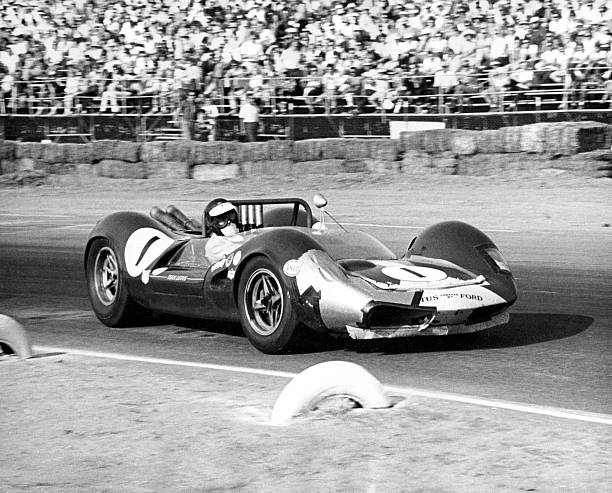 (Dave Friedman/Getty Images)
(Dave Friedman/Getty Images)
Riverside International Raceway, October 31, 1965. Jim Clark (No. 1 Team Lotus 40 Ford) "on it" and on his way to finishing second in the L.A. Times Grand Prix for Sports Cars.